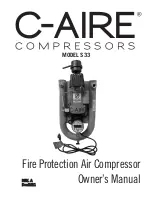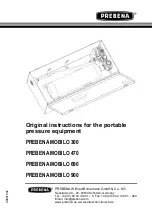
DL241 OPERATORS’ MANUAL
8
OPERATION
The unit should be connected in line with the signal to be processed via suitable insert
points. Ensure that the insert send and return level on your console matches the
operating level set up using the rear panel push-buttons on the DL241. If not, select the
appropriate operating level on the DL241.
For single channel use, each channel may be considered as being completely
independent and set up accordingly. For use with stereo signals such as complete mixes
or submixes, the unit should be switched to Stereo Link mode and all setting up done
using the left hand channel controls.
Setting up is simpler if the Expander is initially turned off and the Peak Limiter threshold
set to maximum. This allows the Compressor/Limiter to be set up in isolation. The ratio
setting depends on how firmly the signal dynamics need controlling; as a rule, higher
ratios provide a higher degree of control but also tend to be more audible in operation
when high levels of gain reduction are required. The integral soft-knee feature of the
DL241 renders these effects far less pronounced, but this factor should still be taken
into consideration when setting up. In general, a higher compression ratio may be used
than on a conventional compressor without compromising the sound quality.
If the Attack and Release controls are switched to Auto, setting up is now simply a
matter of adjusting the Threshold control until the desired amount of gain reduction
occurs. This is judged partly by ear and partly by observing the gain reduction meter. In
general, a maximum gain reduction of between 8dB and 12dB will be adequate. If more
gain reduction appears necessary, consider applying a conservative degree of
compression during recording and then further compression while mixing.
Compressing during a mix does increase the subjective level of tape and other
background noises during pauses and quiet passages but, unless the noise
contamination is serious, the expander section will be able to attenuate it to a very high
degree without compromising the wanted signal.
At this point, the Auto control may be switched off if it is desired to set the attack and
release times manually. The longer the attack time, the longer the compressor takes to
respond to increases in signal level and a slow attack time is often used to accentuate
the beginning of percussive or plucked sounds such as drums, basses and guitars. A
fast attack time will bring the input signal under control very quickly.
The release time should be set short enough so that the system gain has returned to
normal before the next peak occurs and, in general, it should be set as short as possible
before audible gain pumping occurs.
Compressors are often accused of dulling the sound being processed, and a little
explanation is needed to understand exactly why that is. W hat happens is that bass
sounds, which contain most of the energy in a typical piece of music, cause the
compressor to operate, and so any quieter, high frequency sounds occurring at the
same time as the bass sound will also be turned down in level. That is why the cymbals
and hi-hats in a heavily compressed drum track seem to dip in level whenever a loud
bass drum or snare drum beat occurs.
































